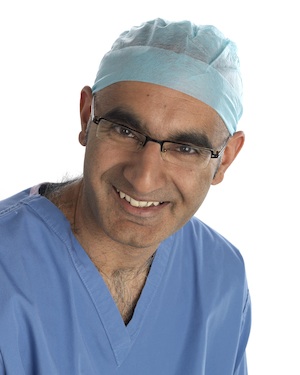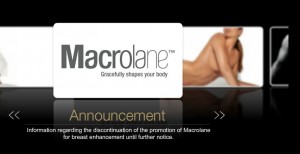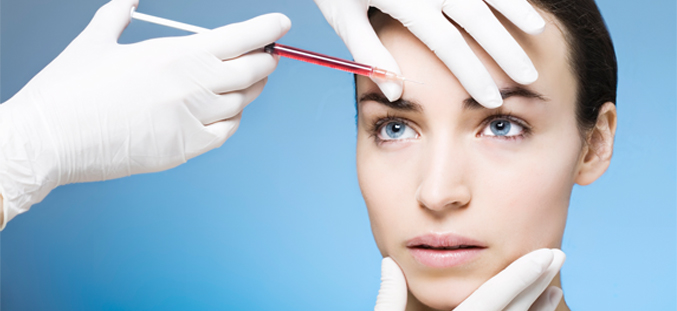
The cosmetic industry has seen a massive increase in its activity over the last few years and is now worth billions of pounds a year. As with any booming industry there is a lot of competition to get a slice of this lucrative market and this has meant that there are an increasing number of products and innovations being released to capture the imagination of an increasing number of women and men who are contemplating cosmetic enhancement.
It’s important to be wary of anything that seems to be fantastically better than everything else. Though it’s often the case that new techniques and products may have gone through a rigorous testing regime to ensure that they are safe it’s still rare to get good quality research showing a true picture of results when something is still new. Often single cases are described rather than bodies of research or no clear comparison is made with other products so it is difficult to work out what is best for a particular problem.

So what is new out there and are they as good as some would have you believe?
FREEZE THERAPY A recent introduction to the cosmetic sector is the use of localised freeze therapy as an alternative to botulinum toxin (Botox or Dysport) to treat wrinkles. Rather than cause temporary paralysis of muscles with botulinum toxin the nerves to the muscles are frozen causing a similar effect. Some early research has shown this treatment to last several months and have similar effects to botulinum toxin. However this treatment is at an early stage and little is known about long term effects or any difficulties associated with administering it. It may take several years to get enough information to truly compare it with botulinum toxin. Until then it is important for potential patients to discuss this treatment with an expert in the field who should be able to explain the risks clearly.
In a similar vein there are also other freeze/cold products already on the market which claim to temporarily improve wrinkles by applying cold to areas of concern. Often the effects are short lasting (less than a day) or relatively minor. This approach should not be confused with the more invasive treatment mentioned above that is used directly on the nerves. As with any cold treatment there is the risk of skin damage if not used carefully.
‘VAMPIRE’ FACELIFTS Another new innovation is the use of a patient’s own plasma (the protein rich liquid component of blood) to enhance facial features. One company has called it the Vampire Facelift and it is said to reduce wrinkles, improve facial volume and generally rejuvenate the face. Unfortunately there is very little good quality research to show if there are any significant benefits to be gained from re-injecting a patient’s own blood products into their tissues and any effect is likely to be temporary. Although there is a lot of discussion about the potential benefits it may be wise to wait until there is a better understanding of what these injections actually do in the face before embarking on this treatment.
LOW DOWN-TIME LASERS It is important to remember that although many talk of the ideal treatment which has minimal ‘down time’ and maximum effect this is rarely the case. Often such approaches require repeat treatments to achieve the desired effect. A good example is the fractionated LASER which can resurface the skin to rejuvenate areas such as the face or hands. Although recovery is much quicker this is because a smaller total area has been treated than conventional lasers and repeat visits are often needed. This is often a sensible approach for those leading busy lives so long as they are aware of the need for repeat visits, usually around 5-6 depending on the area that needs treatment. Click here to see results from the Fraxel fractional laser
This is also the case for some of the newer types of liposuction which use LASER, radio waves or sound to help reduce fatty tissue and possibly encourage skin tightening but I am not sure any of them have good research to back them up. Although they allow quicker recovery they may also need multiple treatments to get the desired effect. For those who want a significant change traditional liposuction may still be the best approach but it does mean a longer recovery time (up to six weeks).
What’s in the future of cosmetic surgery?
GROWING SKIN FROM FAT STEM CELLS Basic scientific research also continues to highlight areas that may soon benefit patients wishing to enhance their appearance. Many laboratories are now able to grow stem cells from fat which could potentially be re-injected into areas as a filler that is more compatible and longer lasting than current fillers. This approach may prove to be more reliable than current techniques of lipo-filling (fat injections).
In addition scientists like those at the Blond-McIndoe Research Foundation are combining these stem cells with biomaterials to produce something like live tissue – this is a process of basically growing new skin – that can be implanted to fill defects or restore volume. However it will probably be at least ten years before these products are available for routine use
BESPOKE BEAUTY An area of research that is beginning to gain momentum and may have a significant impact on all patients having cosmetic surgery or treatments is the increasing knowledge we are gaining about how individuals react differently to certain treatments or products. In the near future better analysis of our own tissues may allow us to tailor individual treatments according to specific profiles to ensure that we get the best possible results. This is already happening with patients who have certain types of cancer and has meant that doctors can more accurately predict good outcomes for patients. This individualised approach for cosmetic enhancement may prove to be the next big thing. In effect, you would be able to totally individualise someone’s someone’s needs from beauty creams to surgery and workout what anti-ageing treatments or other products would work best for certain people. In addition, there seems to be evidence that we will one day be able to use this technology to predict who might need extra treatment after a surgical procedure and who might respond with more scarring than someone else. It’s a fascinating and exciting area.
Mr Baljit Dheansa is a Consultant Plastic Surgeon at McIndoe Surgical Centre. Find out more at my-plastic-surgeon.co.uk
Like this article? Sign up to our newsletter to get more articles like this delivered straight to your inbox.





















































